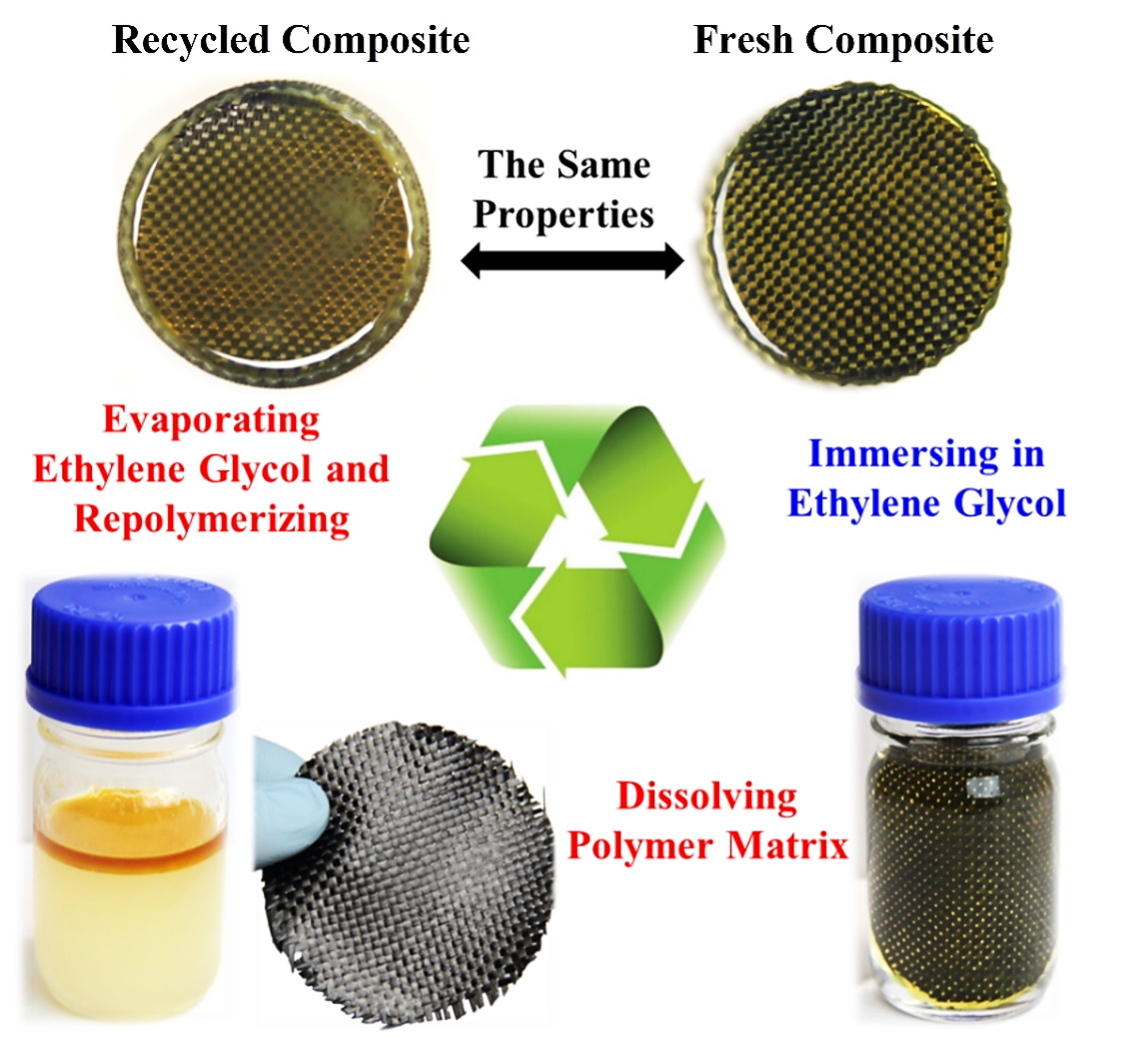Georgia Tech researchers have developed a new approach to enable pressure-free repair, surface welding, and recycling of covalent adaptable network (CAN) polymers by using a small-molecule solvent (e.g., ethylene glycol), in a closed-loop, near-100-percent recycling paradigm. The technique was applied to engineering thermosetting polymers and their carbon fiber reinforced polymer (CFRP) composites – expensive, but commonly used materials for aerospace, automotive, and other industries requiring high strength-to-weight ratio materials.
Immersing epoxy-based CFRPs in ethylene glycol and increasing the temperature resulted in the epoxy matrix being depolymerized as the ethylene glycol molecules participate in bond exchange reactions (BERs) within the CAN. This effectively breaks the long polymer chains into small segments, allowing for the clean carbon fibers to be reclaimed with the same dimensions and mechanical properties (e.g., strength, elasticity, etc.) as freshly created fibers. Heating the depolymerized solution further leads to repolymerization of the epoxy matrix, so a new generation of composites can be fabricated by using recycled fiber and epoxy.
In addition, epoxy composites with surface damage can be fully repaired. Both the recycled and the repaired composites exhibit the same level of mechanical properties as virgin composites.
- Environmentally friendly: Recycles fibers and polymers without the use of supercritical chemicals (e.g., acids)
- Effective: Allows for pressure-free surface repair and welding
- Efficient: Reclaims fibers and polymer with the same mechanical properties as fresh material for use in new products
- Repairing and recycling of thermosetting materials and composites for multiple industries, including:
- Plastics
- Aerospace
- Automobiles
- Naval
- Structural engineering
- Sporting goods and other consumer products

Figure 1.The closed-loop recycling paradigm for CFRP composites

Figure 2. Schematic illustrations of pressure-free welding and damage repair of CANs. (a) Welding of CANs after partially depolymerizing the surface. (I) Immersing the samples in the ethylene glycol solvent; (II) taking the samples out of the solvent; (III) stacking two samples together; (IV) welded material. (b) Welding using ethylene glycol epoxy glue. (I) Immersing the epoxy wastes in ethylene glycol; (II) adding the glue onto the surface; (III) stacking two materials together; (IV) welded material. (c) Repairing of surface damage via ethylene glycol-assisted transesterification: (I) A fresh epoxy CAN with a smooth surface; (II) the epoxy CAN with surface damage via manual scratching; (III) adding epoxy glue to cover the damaged surface; (IV) the fully repaired epoxy CAN with a smooth surface.

Figure 3. SEM images of the (a) fresh and (b) reclaimed carbon fiber fabric. (c) Stress-strain curves of both fresh and reclaimed carbon fibers. Inset imagines show the appearance of fiber fabric before and after tension tests. The two ends of fiber fabric were embedded in the epoxy matrix (~3mm in thickness), which facilitates easy clamping on the MTS machine (d) Room temperature stress-strain behavior of fresh, recycled, and repaired composite. (e) Summary of the elastic modulus (within the first 2% stretch) and ultimate strength of each generation of recycled CFRP composite
